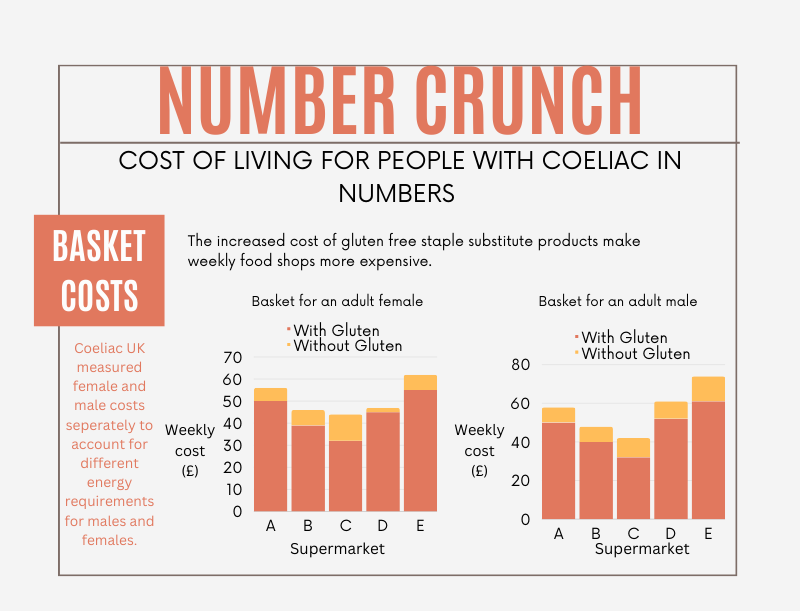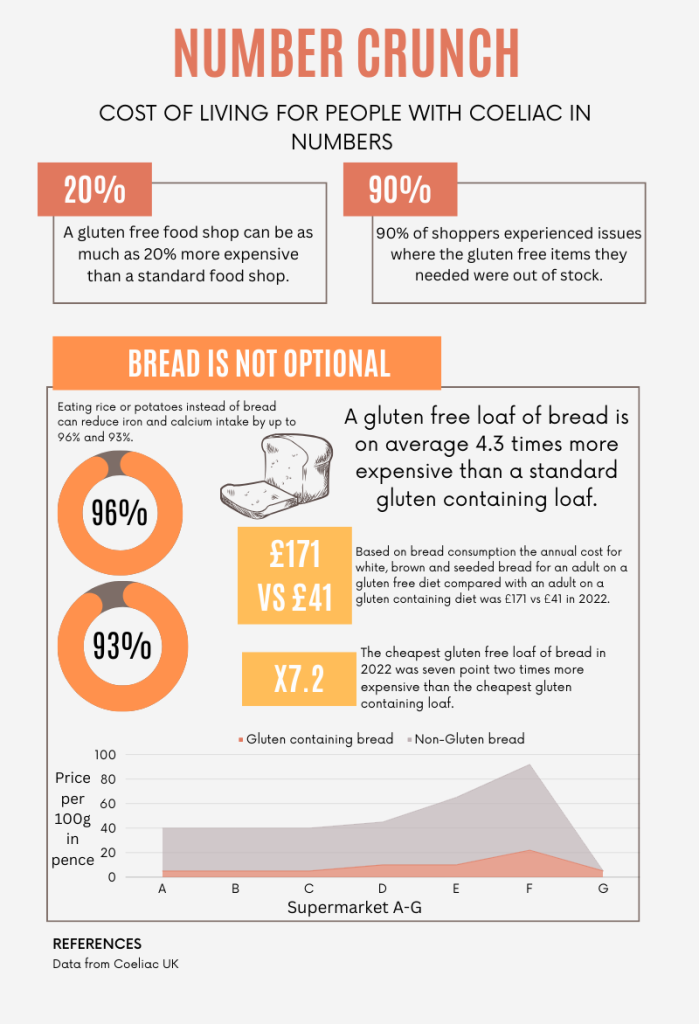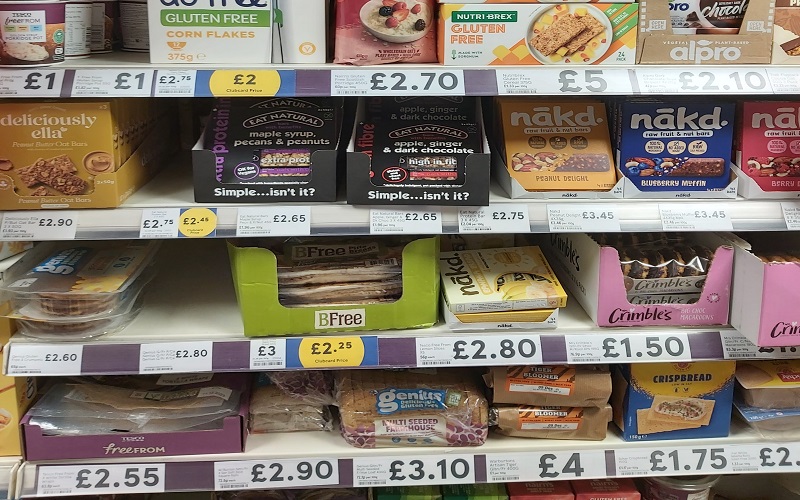The cost-of-living crisis is impacting everyone, but those with coeliac disease face additional challenges.
The only current treatment for coeliac disease, a serious autoimmune condition where the immune system attacks its own tissues when gluten is consumed, is a gluten free diet.
Gluten is a dietary protein found in three types of cereal – wheat, barley, and rye.
It is found in any food that contains those cereals, such as pasta, breakfast cereals, and most types of bread.
The gluten free diet requires staple gluten free substitute products for practical and nutritional reasons, and can be challenging to manage.
Dr Jeremy Woodward, Consultant Gastroenterologist, Addenbrooke’s Hospital, said: “At a time when the cost of living is rising and people are necessarily having to identify any possible savings, the added expense of having a diagnosis of coeliac disease may become unsupportable, especially for the most disadvantaged in our society.”
Coeliac UK, an independent charity that funds research into coeliac disease and advocates for better gluten free food availability, carried out a study on the prices of gluten free food in the UK.
The study, which examined seven UK supermarkets from March-December 2022, revealed the high cost of maintaining a gluten free diet and compared it to a gluten containing one.

Sainsbury’s have price matched their gluten free pasta to their ‘regular’ pasta but the chief expense for many is the price of bread.
In part, gluten free food is more expensive to produce because it must be kept separate from gluten cross contamination.
The need for sterile settings increases processing costs.
Companies that manufacture gluten free food also face the issue of trying to make a profit from a smaller sales market.
Based on bread consumption the annual cost for white, brown, and seeded bread for an adult on a gluten free diet is £171 compared with £41 for an adult on a gluten containing diet, the Coeliac UK study found.
The study notes that eating rice or potatoes instead of bread can reduce iron and calcium intake by up to 96% and 93%.
This is particularly pertinent given people with coeliac disease are recommended to have a higher calcium intake than the general population.

South West Londoner checked the prices of gluten free bread against regular bread for the top ten supermarkets in the UK.
The Coeliac UK figures do not give the supermarket names, so South West Londoner cannot make an exact comparison, but the price disparity is clear.
Alice Mount, 22, who was diagnosed with coeliac disease in 2011, said: “Gluten free bread is so much more expensive than normal bread, and having to eat gluten free is the greatest cost in my weekly shop”.
The damage caused to the small intestine after consuming gluten prevents proper absorption of nutrients.
Previous or ongoing malabsorption can cause malnutrition, anaemia, and for children, delayed puberty.
In more serious cases, complications can include osteoporosis, higher risk for cancers such as bowel cancer and complications around pregnancy.
Coeliac disease affects at least one in every 100 people in the UK, but because milder cases may go undiagnosed or misdiagnosed some experts think this figure is an underestimate.
Dr Peter Gillett, Consultant Paediatric Gastroenterologist at the Royal Hospital for Sick Children, Edinburgh and Chair of the Coeliac Disease Working Group, BSPGHAN, said: “With the current cost of living crisis and child poverty increasing over the last 15 years, I am extremely worried for children who are being diagnosed with the condition in that families will struggle to maintain a gluten free diet for them and the consequences of not adhering strictly will potentially not be discovered until later in life.”
The Coeliac UK study highlights actions that can be taken, alongside resources to aid the gluten free community.
In some countries, governments provide for some of the cost of a coeliac diet.
In Italy, diagnosed coeliacs receive vouchers of up to 140 euros per month to buy specifically produced gluten free foods.
Canadian residents receive tax deductions for the extra cost of gluten free foods versus their non-gluten free counterparts.
In the UK, gluten free food is available on prescription in some areas.
In some places, it has been completely withdrawn and is available only on a case-by-case basis.
In Wales, Scotland and Northern Ireland, prescriptions are free of charge. In England, most people need to pay for their prescriptions.
Tristan Humphreys, Head of Advocacy at Coeliac UK, said: “We believe gluten free prescriptions have a critical role to play in supporting people with coeliac disease to maintain a strict gluten free diet, and we will continue to fight to protect this service.”
“We’re calling on policy makers and the food industry to join with us to help support those with coeliac disease and ensure they can access the food they need to their condition.”





